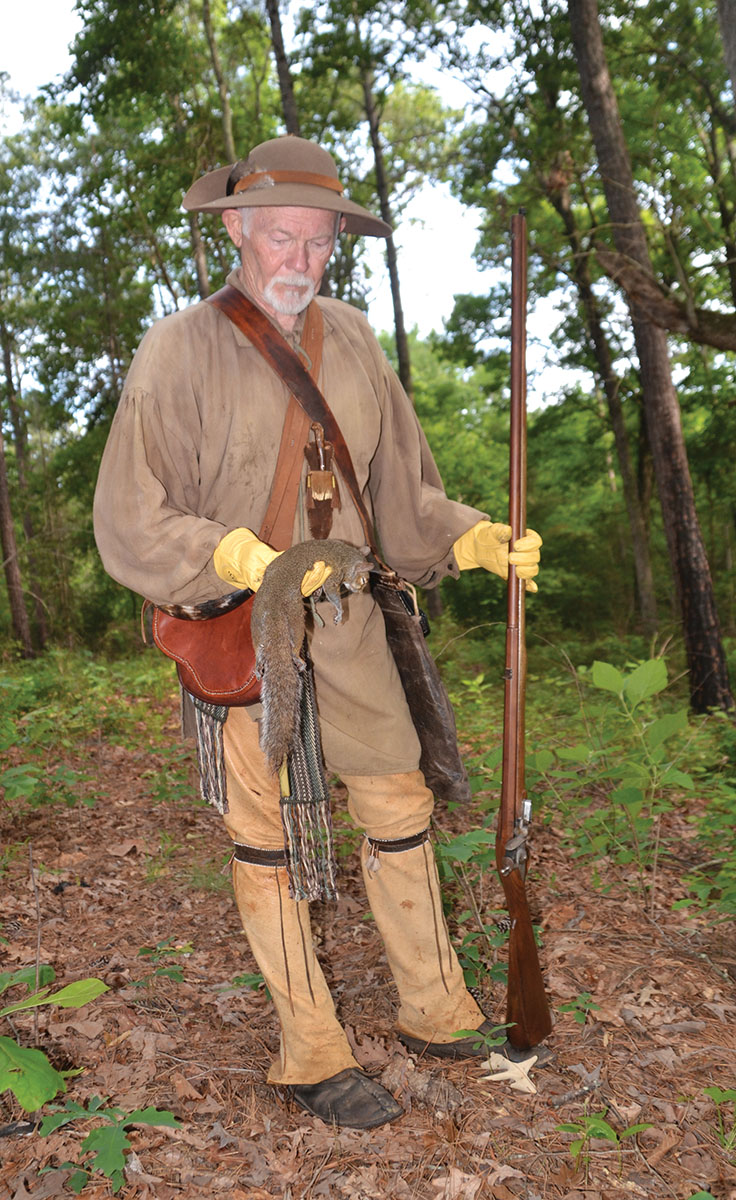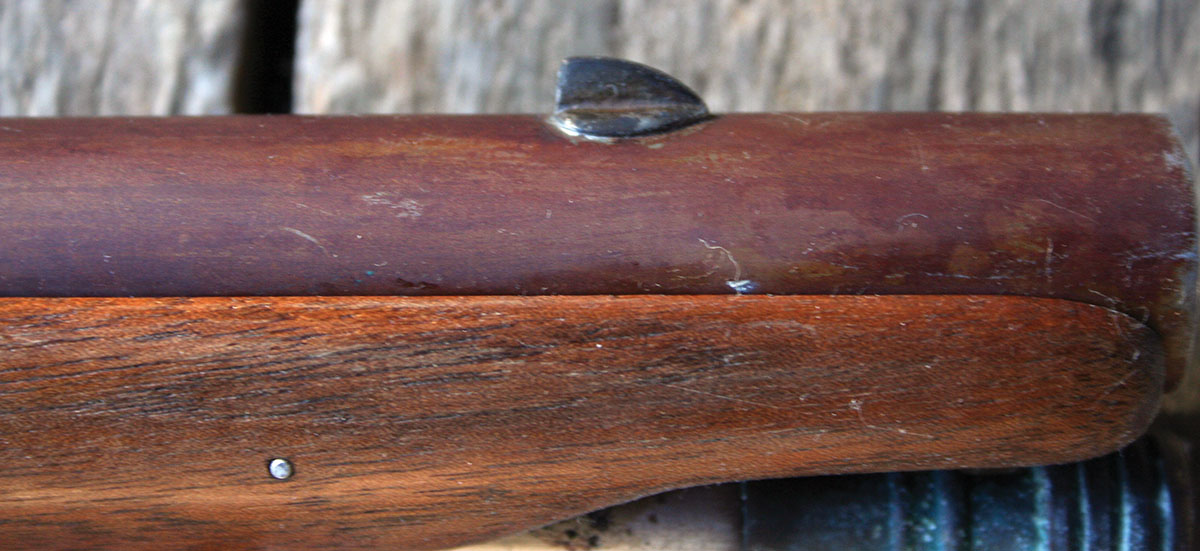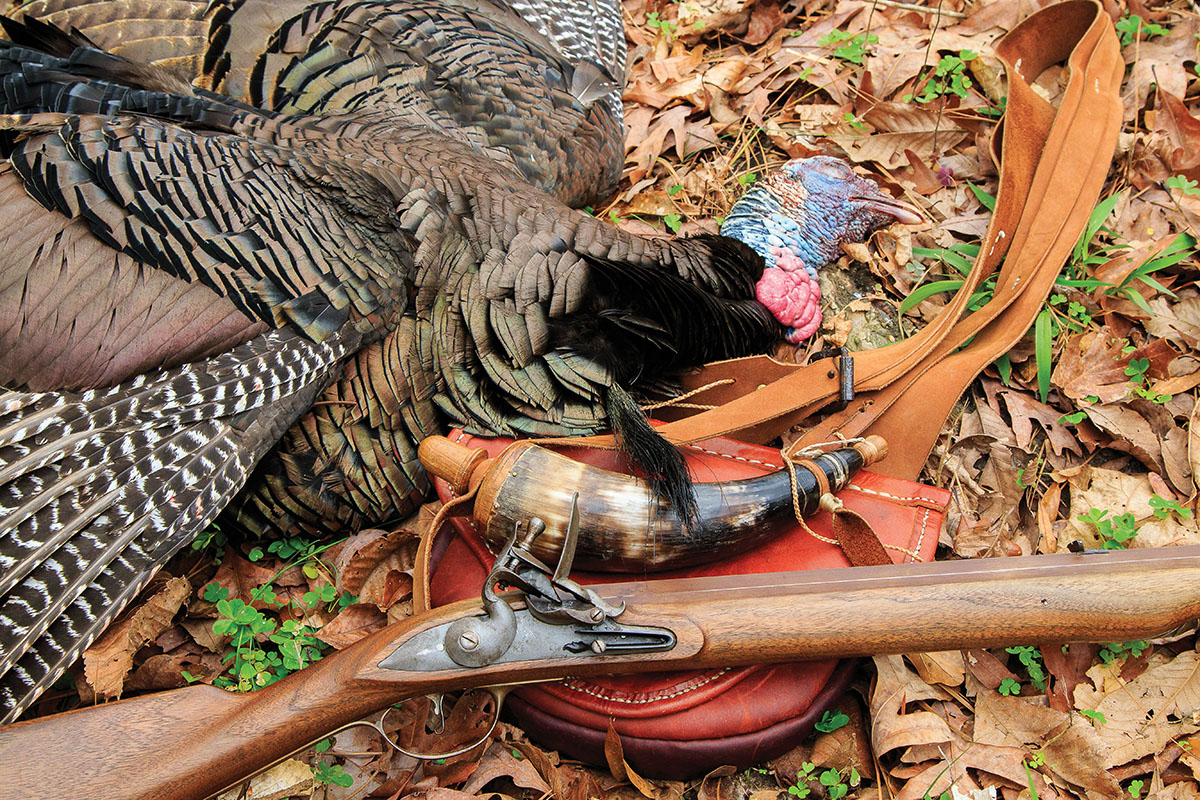Mystery and Wonderment of the Flintlock
feature By: Tony Kinton | December, 24

But somewhere back in the time that separated those two significant events mentioned above, creation being of greater import, came the flintlock. A grand invention coaxed into being by that search for better function. Admittedly, I have at one time or another, through my protracted collection of years, toyed with variety as it relates to devices that send a single projectile or shot charge down a bore, but I have tarried long with flintlocks. As an aside, during those same years, concluded that my needs were met and sentiments adequately embraced without acquisition of any shooting tool birthed after the 1950s.

The first candidate presented only by sound, a bouncing crunch in forest duff. Then I saw him – a perfect specimen – but he was far too close for a load of No. 6 shot. He hopped onto an oak maybe 10 yards in front and set about with inquiry, eyes wide and demeanor curious. Perpendicular with head down, tail flailing the air, he quickly chose to evacuate. However, I was engaged in more than just collecting a squirrel. My focus was making the best of a fine morning, and enjoying the only such morning I would have for the two-week spring season in my home state. Thankfully, the weather had cooperated, sparing me the customary “muggies” typical of this time of year in Mississippi. All was well.
Across the hollow, on the adjacent hillside, there was another squirrel was shaking limbs and busy collecting buds and whatever else he might encounter. I moved slowly, center seam moccasins making nary a sound in last-year’s leaves and buckskin leggings soft against undergrowth. He stopped in a fork of an oak and the fowler rumbled. It was a thunderous bellow but not so much that I failed to hear that thud of squirrel hitting ground. For a two-person stew that I planned for later in the week, I needed one more.
The fowling piece I was using was one I had envisioned even before its build as a pedestrian entity, and it turned out as such. No frills – just lock, stock, and barrel. The lock from L&R, with the stock of plain walnut, the barrel a Colerain 44-inch in 20-bore and choked by that company. I contracted the lock and butt plate inletting, but finished the stock and barrel myself. It was a most encouraging day when I snugged the rig together. The fowler was and is ponderously long, yet sleek, light and perfectly balanced.
Most experienced shooters have at least a rudimentary knowledge of the flintlock. The flint itself, the frizzen, the pan. Flint strikes frizzen, spilling sparks into pan and pan flash igniting main charge. Simple and functional; cutting edge when it was first perfected in those way-back-when days. By the standards of newer-is-better, as permeates modernity, flintlocks are complex. Slow loading, and this is somewhat tedious, especially, I have concluded, with the fowling piece. I shall explain this tedious element in an upcoming paragraph. Powder must be kept dry, flints sharp.

Gathering ingredients was basic: 2Fg Goex for main charge; 4Fg for priming; thin cardboard wads; Ox-Bow felt cushion wads; No. 6 magnum shot. Using the “by-guess” method (based on years of dumping black powder into muzzleloaders), I cobbled together a load. Pellets hit the target. However, to get a reasonable indicator of point of impact, I shot five rounds with no change in the original recipe. Unfortunately, there was an issue.

Throughout the “poke-and-hope” process of adding to and taking from of said components, the Colerain somehow managed to do a fair job with any combination, in which, I kept refining, discovering the very best at a 30-yard target. I kept close records of each load and its propensity or lack thereof to cluster. I refused to rush, staying with this game over several runs to the range and pattern board, always shooting from a bench and bags to mitigate my humanness. Finally, I found what I was looking for.


This brings up the issue of shot. Tedious again. It can be poured from pouch into measure, but expect the patter of pellets around your feet. For a specific hunt, I prefer to make up a pre-measured shot, these placed in a paper tube formed by rolling a small block of copy paper around a dowel. A bit of experimentation with this will shine the light on how it’s done. Or, as the long hunters of old did, get on the Internet!

And there was Texas – once upon a long time back. Minus a fowler at that specific stage of life, I opted to borrow one. I knew this gun and its owner quite well, and I knew the country. Big, hard-gobbling Rios I would hunt and would find. I dressed properly in pure eighteenth century long hunter garb.
The day was less than agreeable. A cold March wind encouraged me to untie a canvas greatcoat from my haversack and button that coat around me. Turkeys were gobbling. Taking up temporary residence in a live oak cluster and I yelped softly on a cedar friction call. To hasten this story, turkeys came in, filling a two-track that was close by. A dozen or so hens, two competing gobblers; a chip shot. One of the toms tumbled at 21 yards.

I wore a camo shirt and hat to the woods but threw in a sport shirt and Tilley hat with which to do my Superman transition prior to domestic chores. This swap was designed to assuage any suspicions regarding my sanity should I present to passersby and store clerks in long hunter style. Still, a long hunter should dress the part.
The hunt was not only successful; it was also brief. All went as hoped. The big gobbler was just down the hill in oaks and pines, a tiny opening upslope. I opted for that opening and tucked in a tangle on the off side. Three soft yelps from a cedar friction call. The bird answered; I fell silent. Presently, four hens came tipping up the hill, stopping to scratch in leaves and preen and peck at grass seeds. That drumming of the gobbler followed.

Now, here I am. Aging. No longer as vivacious as once I was. The occasional hint of “don’t want to” arising in my plans. Life unlike that one to which I had grown pleasantly accustomed. A widower who will never forget. Still, the flintlock fowling piece brings a smile, whether admired from where I sit writing or taken into the woods. I have tarried long with flintlocks.


